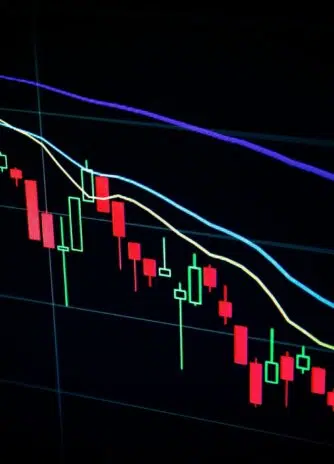Nvidia CEO Jensen Huang insists the world is not witnessing an AI bubble but a historic tipping point. In his view, accelerated computing will soon permeate everything from software development to fleets of real-world robots.
But a growing group of market skeptics argues that the only direction after a tipping point is down.
On Wednesday, Nvidia once again delivered blowout earnings and guidance, easing short-term concerns. Still, longer-term risks loom large for the world’s most valuable publicly traded company, now valued at more than $4.5 trillion. Many of those risks are beyond Nvidia’s control.
One central concern: customer concentration. Nvidia disclosed in a regulatory filing that the bulk of its explosive data center revenue depends on just four unnamed customers. In the third quarter, those customers accounted for 61 percent of Nvidia’s $57 billion in revenue, up from 56 percent the previous quarter. Based on public partnerships, analysts believe they likely include Microsoft, Meta and Oracle.
The company has also sharply increased the amount it spends renting its own GPUs back from cloud providers, doubling those commitments to $26 billion from $12.6 billion in the previous quarter, with contracts extending through at least 2031. At the same time, Nvidia has pledged up to $100 billion in investments toward OpenAI and $10 billion toward Anthropic, two of its largest customers.
This tight web of financial interdependence raises concerns, especially when many AI ventures are not yet generating meaningful profits.
“A lot of this growth is coming from loss-making startups or loss-making projects,” said Chaim Siegel of Elazar Advisors. “Most likely the cycle ends badly unless these companies collectively stop spending and let profits emerge, which is nearly impossible.”
Huang Rejects Bubble Fears
Huang pushed back hard against the idea of an AI bubble on the earnings call, arguing that Nvidia sits at the center of three massive shifts.
First is the migration of traditional, non-AI workloads—like engineering simulations and data science—from CPUs to Nvidia’s accelerated computing platform. Second is the birth of entirely new software categories, such as AI coding assistants. Third, Huang foresees AI expanding from virtual tools like chatbots into the physical world, enabling autonomous cars, robots and more.
“These three fundamental dynamics will each drive infrastructure growth for years,” Huang said. “Nvidia is chosen because our singular architecture powers all three.”
However, even bullish investors acknowledge that building the data center capacity needed for this vision will require vast amounts of land and electricity. Ivana Delevska, CIO of Spear Invest, said these constraints remain a major concern.
Huang said Nvidia is working aggressively to secure partnerships across land acquisition, power sourcing, data center construction and financing. “None of these things are easy,” he said, “but they’re all tractable.”
Dominance Not Guaranteed
Competition is growing. Tech giants like Google’s Alphabet and Amazon are designing their own AI chips and selling them to many of the same customers Nvidia relies on. That raises questions about how long Nvidia can maintain its current dominance.
“They’re sold out for this year and probably next,” said Jay Goldberg, senior analyst at Seaport Research Partners, which rates Nvidia a “sell.” “That makes me wonder what upside surprises they can still deliver. The list of things that could go wrong for Nvidia is longer than the list that could go right.”
We have helped 20+ companies in industries like Finance, Transportation, Health, Tourism, Events, Education, Sports.












